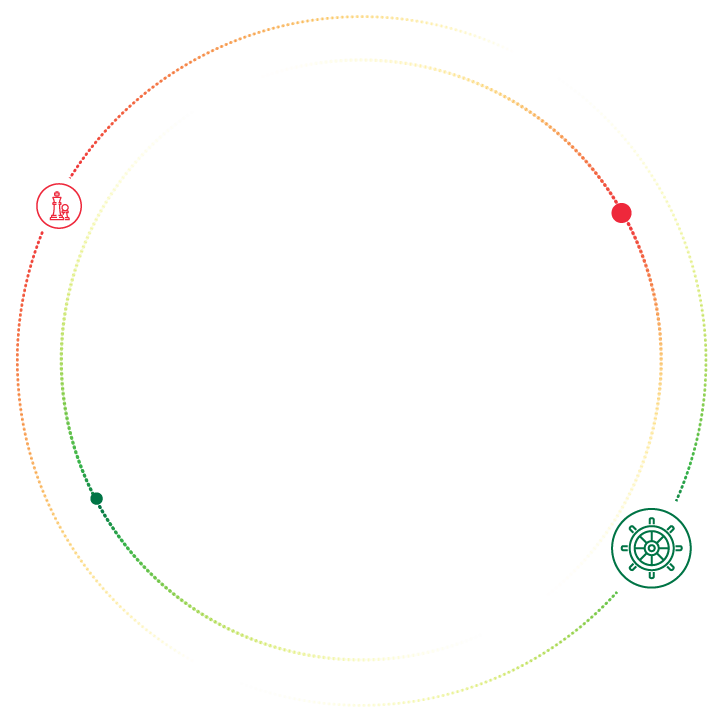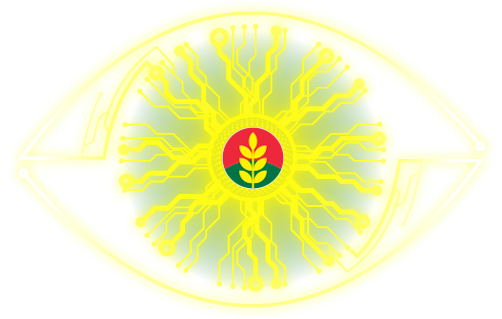Download Chapter 2
SWOT ANALYSIS

The supply of gas to Ca Mau Fertilizer Plant is done via long-term purchase contracts signed with foreign partners in accordance with the regulations of PetroVietnam, in which purchase price is based on the international price and common practices in the world market.
In general, with the price agreed among the parties and in the current situation, at least in medium term, the supply of gas for Ca Mau Fertilizer Plant is ensured continuously and stably, enabling the plant to focus on production, enhance productivity and take advantages of scale with the purpose of reducing production cost and improving competitiveness in the market.
During the past time, PVCFC has been one of the leading enterprises in Urea when positioning and leading the market in terms of market share, brand, selling policy and ability to adjust selling price in each period, in short term, middle term and long term.
Given awareness of role and mission of a producer providing nutritional solutions for plants, PVCFC focuses on its position in the industry. The Company always ensures competitiveness with domestic producers and gradually compete with overseas products. The Company also maintains a certain gap in selling price with other same products and does not participate in negative price wars that reduce internal power and strength of enterprises.
In the coming time, with the establishment and operation of NPK Plant, PVCFC will make increasing efforts to promote this role in NPK market to become a reputable enterprise not only in Vietnam but also in South Asia.
Tier 1 and Tier 2 distribution system is strong and covers market, especially the key markets in the South and Cambodia which creates a firm foundation for PVCFC to deploy its focus strategy, with selection and priority, for the purpose of optimizing revenue, selling price, and business efficiency. At present, more than two-thirds of PVCFC’s sale volumes come from Mekong Delta market; therefore, the planning of production and business is always done to ensure the harmonious benefits between manufacturers and distribution systems at all levels.
To further exploit the potential from the existing distribution system, PVCFC has strengthen using technology information to serve sales, supply chain and distribution across the country. In recent years, the Company has push to apply and deploy significant IT projects such as ERP, Big Data, DMS, CMS, etc. with different levels to effectively exploit IT, market data, and distributors by regularly updating information about demand, consumption, and inventory. Accordingly, the Company has increasingly improved supply capacity, timely meeting the needs of distribution system, reducing intermediate costs, step by step reaching an advanced, consistent and continuous business model named “Just in Time”, based on models and lessons successfully referenced from multi-industry corporations in the world.
In order to reduce product costs, in addition to reducing production costs, PVCFC actively establishes a streamlined sales system, minimizing business focal points, distributing from producers to consumers.
In particular, at the business focal points of PVCFC, regional distribution system is set up based on the most streamlined organizational structure, prioritizing to use the local sales teams who understand the market, the industry, the local culture, etc. but still ensuring to complete the highest purpose - monthly/quarterly/yearly business targets which are assigned to each region, manager and staff. This not only requires the activeness and the creation of managers of all levels but also encourages sales staff to be results-oriented and get compensation as their performance. Above all, it is required to streamline sales system with timely updating market situation and competitor information to meet diverse needs and strict requirements of distribution system and consumers.
In the coming time, to further promote and optimize distribution model, PVCFC continues to research and test new forms of distribution on the basis of ensuring harmonious interests of manufacturers - distributors - consumers. With IT application to production, sales and distribution, PVCFC considers this is one of the most effective and important instruments to maintain its firm positions in both local products and imported goods.
In addition to maintaining the harmonious interests among manufacturers - distributors - consumers, as other enterprises operating in market economy, PVCFC always makes every effort and is committed to the most important goal for shareholders, including State shareholders, major shareholders, strategic shareholders and common shareholders. PVCFC has increasingly strives to improve financial indicators i.e., ROA, ROE, EPS, etc. Working with financial institutions, foreign investment funds, in general, PVCFC has received positive assessments on financial indicators and sales growth. In the coming time, the Company strives to increase value of intangible assets such as brand, copy right, technology, invention and solutions in production, business and R&D to enhance market value of assets.
Due to many reasons, PVCFC’s Urea production cost is still quite high as compared to some other countries. Production cost in some countries is less than $200/ton because they have advantages in resources and less investment costs. Many of them are in Middle East and Baltic region possessing abundant oil and gas resources and having a developed oil and gas industry.
In Asia, some plants in Indonesia, Malaysia and China also have competitive and lower production costs than PVCFC’s. Therefore, PVCFC faces certain disadvantages in export market in comparison with the manufacturers in those countries. In addition, the competition pressure is higher for PVCFC and other enterprises in the same industry when the source of cheap goods from the above-mention market is imported to Vietnam at some time points.
Inland waterway transport capacity in Vietnam accounts for a small proportion compared to railway transport, which occupies for 80% of the total cargo traffic of the country. Logistics activities in supply chain and fertilizer distribution from Ca Mau Fertilizer Plant to many domestic markets are carried out by multi-modal transport (waterway, railway, etc.), leading to a remarkable cost arisen, from 8% to 15% of selling price, in each specific time. This cannot be settled down early in medium-term or long-term and depends on many intermediaries, thereby affecting PVCFC’s product distribution to domestic consumers.
Vietnam’s fertilizer industry has a visible feature that, in popular consumption segments, there are many product lines and types of fertilizers with different formula provided by many distributors; therefore, the competitive pressure is very high. Price wars regular take place among the distribution channels of PVCFC as well as between PVCFC and its competitors.
To solve this problem, especially to reduce inventories and diversify products, PVCFC has researched and assessed market to launch new fertilizers with higher value and less competition as compared to the common ones. However, after a time, new products, in spite of being accepted by consumers and having good consumption, still have a quite small market share and has not promoted the potential and production strength of PVCFC.
In general, some new product lines initially meet the requirement on revenue and profit. However, there are some products with low sales volume, not meeting target in spite of bring high profit rate. Therefore, in the coming time, PVCFC needs to settle down this problem to enhance business performance.
Mekong Delta is the largest fertilizer consumption market in Vietnam with the demand from farmers on Urea from 680,000 to 720,000 tons/year, DAP from 360,000 to 390,000 tons/year, Potassium from 220,000 to 260,000 tons/year, NPK from 800,000 to 1,100,000 tons/year and other fertilizers from 1,000,000 to 1,200,000 tons/year.
Ca Mau Fertilizer Plant is located in Mekong Delta. This is the largest market in the country with potential agricultural and aquatic development, in which rice and fruit growth and export are the regional strength. Annual rice cultivation area is stable at 1.6 million hectares with 2 main crops of Winter-Spring and Summer-Autumn, excluding the third crop with an area of 650,000-750,000 hectares operating under export orientation (rice export of Mekong Delta account for 80% of total annual rice export, from 6 - 7 million tons, valued at more than USD 3 billion/year). It can be seen that with the Urea market share of 60%-65% at Mekong Delta, this is an advantage that many other enterprises in the same industry are difficult to have. In two recent years, price of rice collected from farmers and exported has been remarkably improved, facilitating the farmers to rest in mind to cultivate and make more investment into crops. Thanks to that, PVCFC can maintain stable market share in terms of Urea, Potassium, NPK, and new products.
For fruit tree market, area of land for growing fruit trees in Mekong Delta accounts for more than 60% of total fruit tree area in the country of more than one million hectares, in which many products are provided to the processing companies in the region for domestic consumption and export. In the coming years, this will be a major market share for new products and NPK products of PVCFC. According to economic experts and scientific research teams, if being invested appropriately, the economic efficiency from fruit tree market will higher than that of rice growth. Therefore, the potential development of fruit trees in Mekong Delta is expected to bring more opportunity and to improve in the future. This will help PVCFC develop and new products and NPK products as well as give nutrient solutions serving the regional development in the future.
For vegetable market, with a large cultivation area, distributed in fertile lands stretching across low-lying areas along the basins of Tien Giang and Hau Giang rivers with a short cultivation time has created favorable for PVCFC to expand new fertilizers and high-value organic fertilizers, making a great contribution to supporting the supply chain of “green - clean - beautiful” vegetable products that are suitable to consumer taste and gradually meet the demand of retail supermarkets of the large domestic and foreign corporations.
With the largest Tier 1 and Tier 2 distribution system in the country, PVCFC has been gradually maintain and develop market share of strategic products, contributing more than two thirds of revenue from product consumption in Mekong Delta.
Southeast and Central Highlands are potential markets for fertilizers serving industry trees, in which the demand for Urea consumption is from 180,000 to 220,000 tons/year; NPK from 1,100,000 - 1,200,000 tons/year; Potassium from 130,000 -160,000 tons/year; and DAP from 40,000 - 50,000 tons/year; and other fertilizers from 500,000 - 650,000 tons/year.
According to statistics, most of coffee and rubber trees in Vietnam are concentrated in the Southeast and Central Highlands, of which coffee is allocated in 3 provinces i.e., Dak Lak, Gia Lai, and Lam Dong in Central Highlands, with area of more than 600,000 hectares. Rubber trees with area of more than 930,000 hectares are allocated in the Southeast beside some other crops such as pepper, cashew, tea, cassava, etc. In general, demand of NPK, SA and Potassium is quite high in these two regions. At present, the prices of coffee and rubber are recovered which is an important factor deciding the demand on fertilizers of the farmers. PVCFC is focusing to expand distribution channels to provide high-value products including new fertilizers, organic fertilizers, NPK and Potassium fertilizers to serve the high-value crops in the regions.
During the past years, Cambodia has been a target market playing an important role in PVCFC’s development strategy with increasing fertilizer consumption, contributing to improving sales volume and increasing profit for the Company. As for market potential, annual demand for Urea is from 380,000 to 410,000 tons/year; DAP from 250,000 to 280,000 tons/year; NPK from 260,000 - 300,000 tons/year, excluding other fertilizers. The good exploitation of this market opportunity creates an important premise for PVCFC to conquer and expand the market share for product branched “Ca Mau Fertilizer” in Cambodia.
At present, consumption volume of Ca Mau Urea at Cambodia accounts for 35% - 40%/year and in the coming time, PVCFC orients to develop NPK products from 15% - 20% which is expected to create a breakthrough in business strategy at Cambodia in particular and in the Southeast Asia in general in parallel with expending portfolio abroad.
Apart from Cambodia, as mentioned-above, PVCFC orients to expand market to the countries in Southeast Asia, South Asia and Latin with potential market such as Thailand, Myanmar, Philippines, Bangladesh, Nepal, Sri Lanka, India, Brazil, etc. These markets have high and stable fertilizer consumption, promoting competition in selling price and product quality, leaving certain reputation when approaching and developing these markets during the past years. The expansion of these export channels has an essential meaning in the context highly seasonal fertilizer industry in Vietnam (peak in Q2 and Q4), thereby, helping PVCFC to improve sales volume in domestic low periods (Q1 and Q3), maintaining stable cash flow, ensuring reasonable inventory, minimizing selling and warehousing costs and significantly improving business efficiency in production and business.
Consumption of fertilizer is forecasted to reduce in 2022 compared to 2021 due to the increase in price of fertilizer and input materials. However, the Company still maintains consumption proportion in some major markets in 2022. It was estimated that the demand on Urea products in 2021 was 2.16 million tons in the whole country, an increase of 113 thousand tons, equivalent to 5.5% compared to 2020 due to the increase in direct consumption and demand on raw material of NPK plants. This improvement in demand received the support from price of agricultural products, especially the price of rice which kept a higher price level than that in the previous years, in both rice collected from the farmers and exported. DAP market was mainly domestic consumption, occupying for more than 50% and the remain was provided to NPK plants. National demand on DAP was estimated as 887,000 tons, in which the Southwest market occupied for 45%; NPK plants occupied for 46%. For Potassium, it was estimated that the demand on Potassium in 2021 reached 913,000 tons, increasing by 5% from 2020 to meet the domestic demand which increased in some regions, especially the increasing demand from NPK plants.
That the production of organic agricultural products or in organic trend and the use of high-quality fertilizer products is getting more popular is the motivation for PVCFC to develop new products to improve revenue and optimize profit in the coming time.
According to Fitch Solutions, it is forecasted that consumer spending in Vietnam for essential goods in 2022 will continue to increase compared to 2021. Accordingly, spending on food and foodstuffs is expected to increase by 10.5%; rice, cereals, and bread by 10.4%; meat and animal feed by 10.1%; vegetable oils and fats by 10.6%; fruits and beverages by 10.8%; vegetables by 10.5%; sugar by 6.4%, etc. This increase in domestic consumption trend will create an important foundation to support Vietnamese agricultural market this year and the following years.
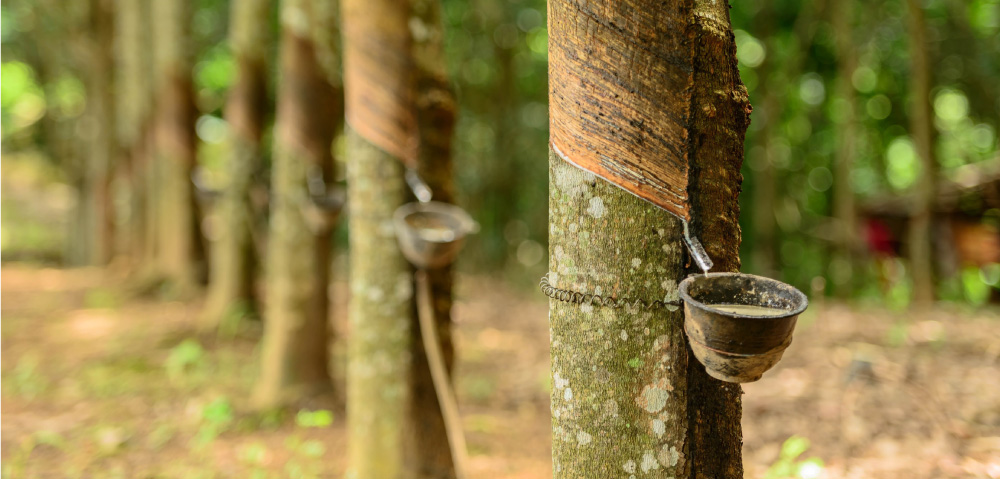
In general, input material price of Urea production is forecasted to increase compared to that in 2020. This will cause direct effects to production cost and affect competition ability in the sector, particularly in comparison to the surrounding countries such as China, Indonesia, Malaysia and further countries with high competitive advantages in the Middle East and Baltic.
Regarding Potassium, the import is mainly from the major supply sources in the world such as Canada, Russia, Belarus, China and Israel. Statistics show that potassium imports from these markets account for more than 90% of total supply of potassium imports into Vietnam. In the past years, since some corporates have actively reduced supply sources together with the complicated geopolitical context in the world such as Russia-Ukraine conflict, which has caused serious effects on fertilizer production in Baltic and Black Sea regions; interruption of transportation and supply activities; many major markets such as Brazil and Europe are looking for new alternative sources of supply from Russia and Belarus but not being successful, Potassium price continues to escalate.
For DAP, since domestic production cannot meet the demand, Vietnam has to import DAP. The effect from the world’s DAP price, especially China, which meets more than 70% of DAP imported into Vietnam. At present, domestic DAP supply in China is tightened and DAP price tends to increase; therefore, it is likely that the DAP price in 2022 will continue to remain much higher than the average price in 2021.
The trend of increase in sea freight in recent quarters and the rapid increase of cruel oil prices in recent times in the world has made domestic gasoline prices increase nearly to VND 30,000/liter and there are any signs of decrease. Therefore, that transport freight of goods in general and of fertilizer in particular in Vietnam will increase from 20% to 30% in 2022 is likely to happen, affecting domestic selling prices and decreasing profit of fertilizer enterprises when the increase of transport freight is higher than the increase of selling price in domestic market. In addition, the increase in transport freight in the world has limited the demand on new purchase from international market, decreasing production export of PVCFC.
The Government’s Resolution No.159/NĐ-CP dated 28 October 2020 to submit to National Assembly for approval a resolution on VAT on fertilizers is a good sign, but the National Assembly Standing Committee concluded that the relevant agencies need to review and add more information to agenda at the meeting in March 2022. Whenever this law is not approved by the National Assembly, PVCFC and other companies in the same industry still have to bear large input costs, directly affecting business performance.
The year 2021 continued to witness heavy impacts of Covid-19 pandemic on the world economy in general and Vietnam’s economy in particular. For fertilizer sector, the pandemic affects both supply and demand.
For demand, the most obvious impact on consumers was the decrease in demand for goods due to lower income; agricultural products were stagnant at border gates and bonded warehouses; many contracts to export agricultural products from Vietnam to the world market were canceled, causing risks for suppliers, exporters and many companies. Agricultural product price was uncertain; input material price increased, affecting demand for fertilizers of farmers.
For supply, many production projects were slowly deployed, causing high costs. At some times, fertilizer import and export activities were stopped due to regulations on disease control of foreign governments; shortage of workers was common in many ports; and transportation and circulation of fertilizer products were delayed. Some export shipments were delayed, causing unnecessary costs.

